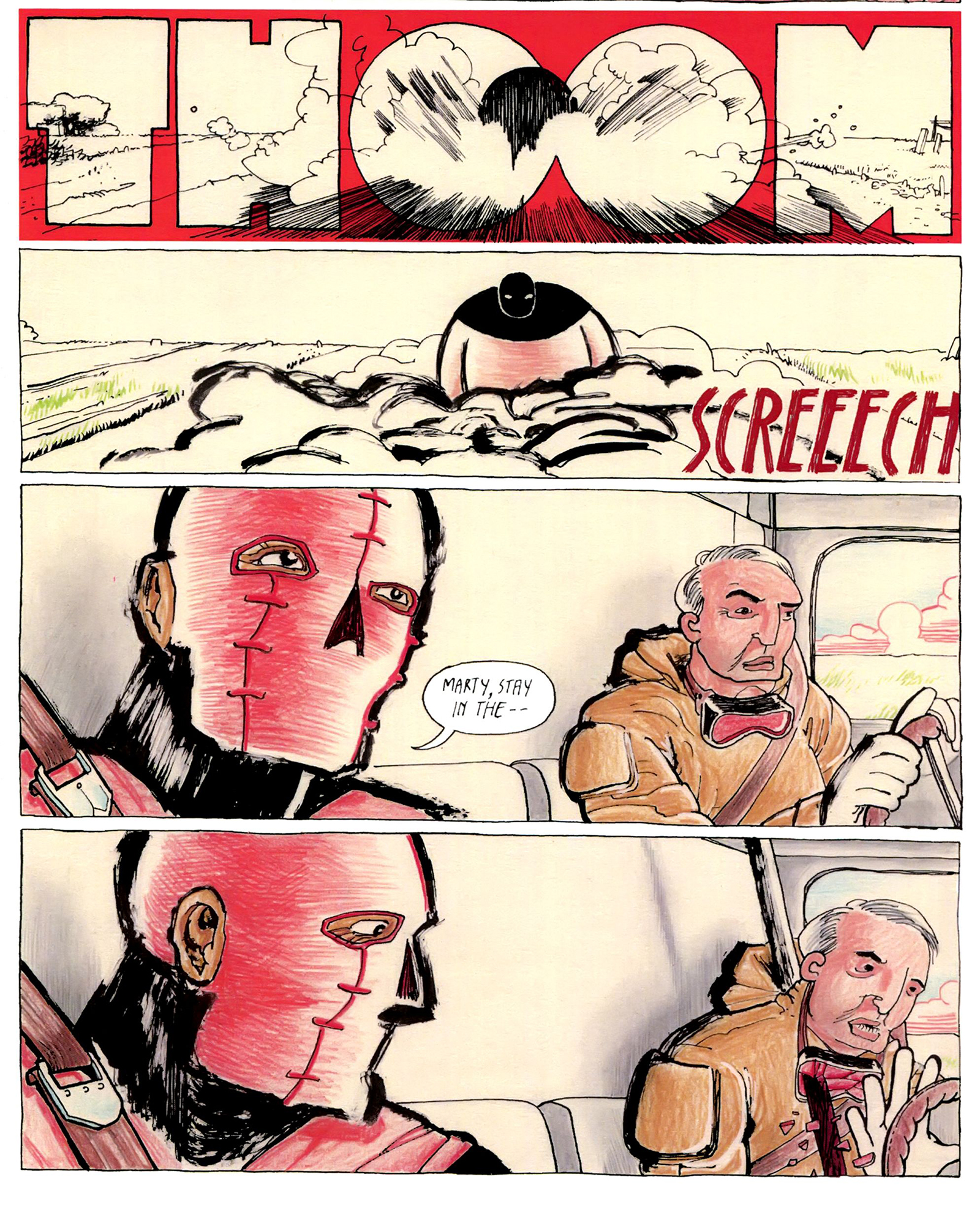Alternative comics offer medium of expression to unconventional artists

“CORPA” by Michel Fiffe is an alternative comic that derives from the 1980s superhero series, “Suicide Squad.”
(Courtesy of Michel Fiffe)
By Joshua Greenberg
Feb. 25, 2015 1:35 a.m.
Comic books are everywhere – Marvel and DC Comics are mining decades of story lines for a huge slate of movies and television shows. But comics are more than a source to be mined for superhero blockbusters. New creators are dealing with issues every month in ways that couldn’t be done in other formats – issues of comic books.
Zines and alternative comics are unconventional. Sometimes to a fault.
Without the barriers to entry of traditional publishing, alternative comics, including zines and minicomics have fewer authorial limits. L.A. Zine Fest had over a hundred creators for these unique comic books.
I attended the L.A. Zine Fest on Feb. 15. It was two rooms paved over with tables, and on those tables were comics and zines. Zines – self-published booklets of creative works – use text and images but are generally prose. Both zines and the alternative comics at Zine Fest are defined by small print runs and a DIY ethos. They can be political, social and controversial in ways which mainstream comics rarely are. Along with minicomics, I picked up booklets and pamphlets, some printed artwork and paperback collections by relatively larger small press companies in attendance, putting out surprisingly put-together projects.
Specific zines aren’t written for everyone – UCLA’s recent zine-making workshop, which brings students together to make a booklet about “I Never Had It Made” is irrelevant without the unifying experience of reading the Common Book. There were a lot of comics at the Zine Fest that I couldn’t care less about. But there were some that spoke to me.
I found a personal touch that differs when buying a comic from the person who made it, a thing that might only exist in 100 to 500 copies, versus getting a hardback from Amazon. I wouldn’t be aware of, say, Pham Nuwen’s sci-fi comic “Epoxy” if I hadn’t seen it on the aisles. It’s intrinsically local, too – the artists at the Zine Fest were almost entirely different than what I would have seen if I lived in, say, Toronto. Though a circuit exists, most at L.A. Zine Fest were L.A.-based.
There’s a fixation on the unconventional and the experimental going on, especially in younger zines, at the expense of getting ideas across. The thing that’s in play, though not everywhere, is that in order to do something interesting a zine comic has to be “groundbreaking” and do new things that could potentially obscure the form, and I don’t think that’s necessarily true.
Zines are a great place to experiment, but it turns out that the traits that are most important in good comics are the abilities to convey emotion and movement and action, and get ideas across. Minicomics don’t really rely on coloring or production values that much. Emotion and action can be communicated just as well in a tiny booklet as in a giant graphic novel. Those are the things that count.
Smaller comics publishers like Study Group Comics and Floating World Comics are a fine midpoint between larger publishers and plucky single-person operations. They put out collections from talented up-and-comers like Sam Alden, and much of it is online. The Internet is the main way I find these alternative comics.
One of them is Michel Fiffe’s self-published monthly “COPRA,” a love letter to the 1980s superhero series “Suicide Squad.” It takes the roughness and texture of action from the original and repurposes them with weird monsters and explosions. “COPRA” is all about presentation – about using the form of a genre to tell a completely different story.
When it comes to these zine comics, I am totally for judging books on their covers. I find that covers often reflect the content within. Rough and from-the-heart doesn’t mean poorly edited and over-written. In a world where there are thousands of booklets competing for my attention, along with a wide variety of periodicals, I don’t have time to waste on a book that isn’t determined to convince me it’s important with every moment.
The UCLA Store even has a copy of Dash Shaw’s weird comic, “Doctors,” about people who retrieve the deceased from their near-death experiences, and that’s something I wouldn’t be surprised to find at Zine Fest.
The boundary between the fringe and the mainstream is thin. The techniques used in alternative comics are becoming mainstream, and even if they weren’t, they’re effective in their niche.
What alternative comics and zines have you been reading lately? Email Greenberg at [email protected].


